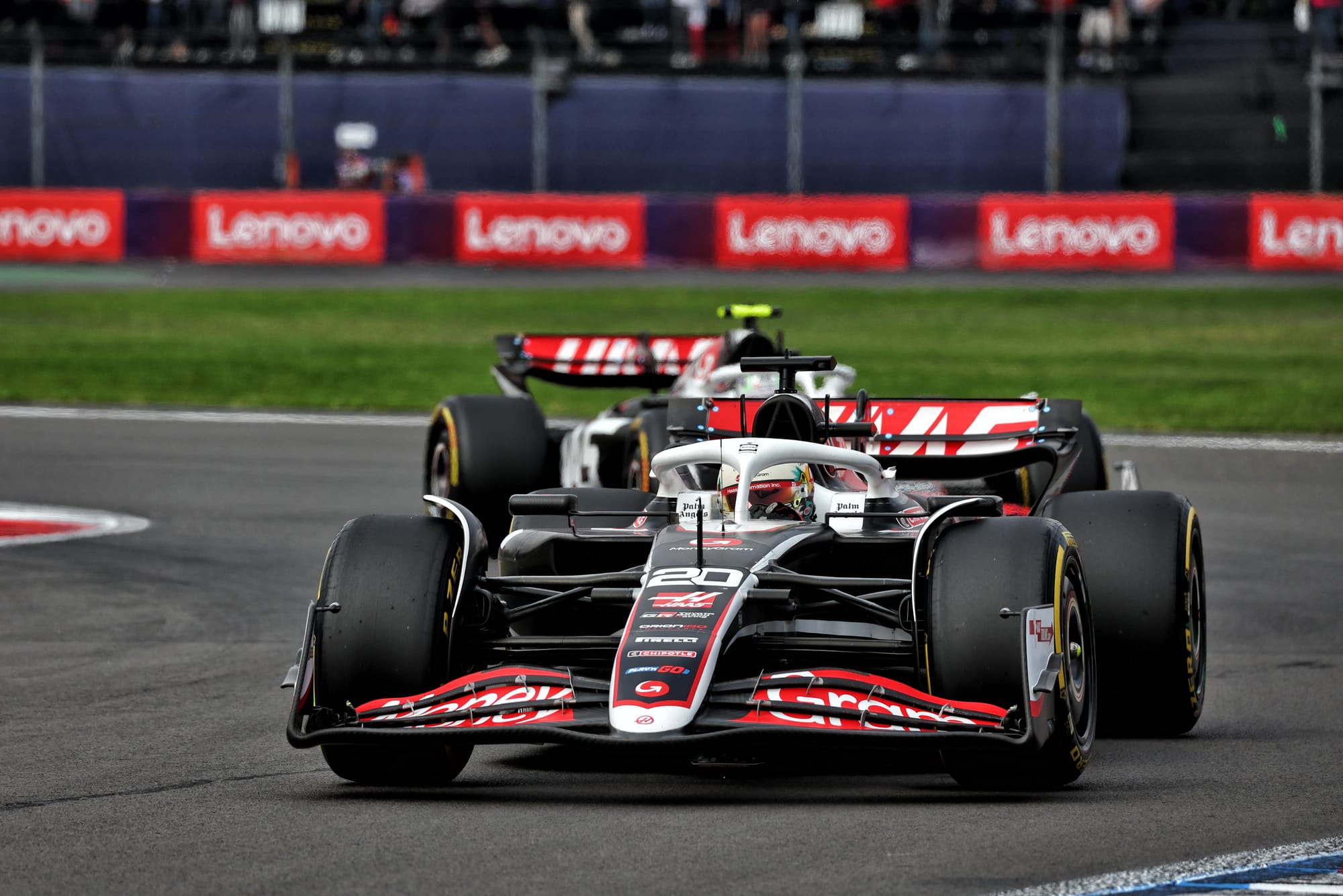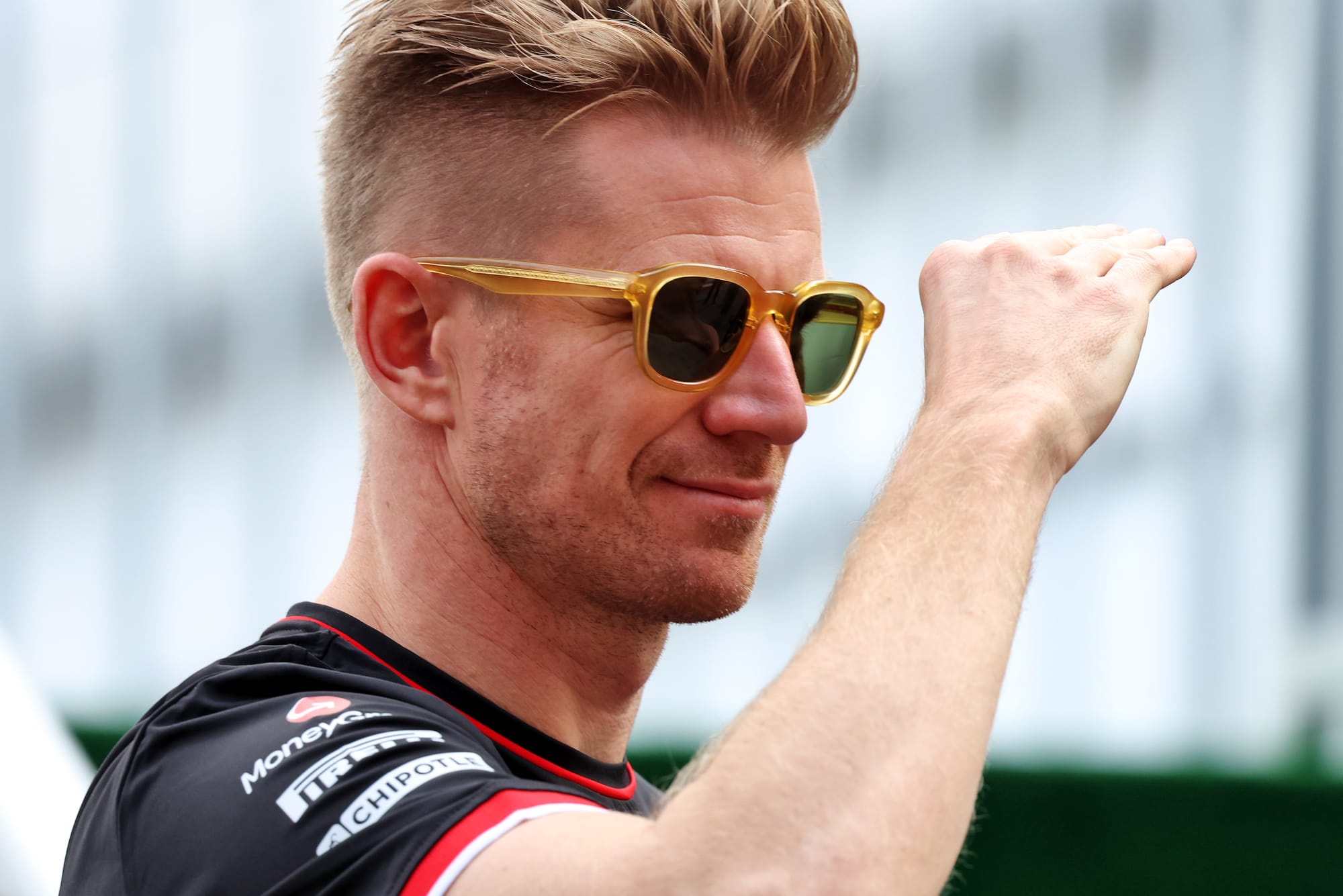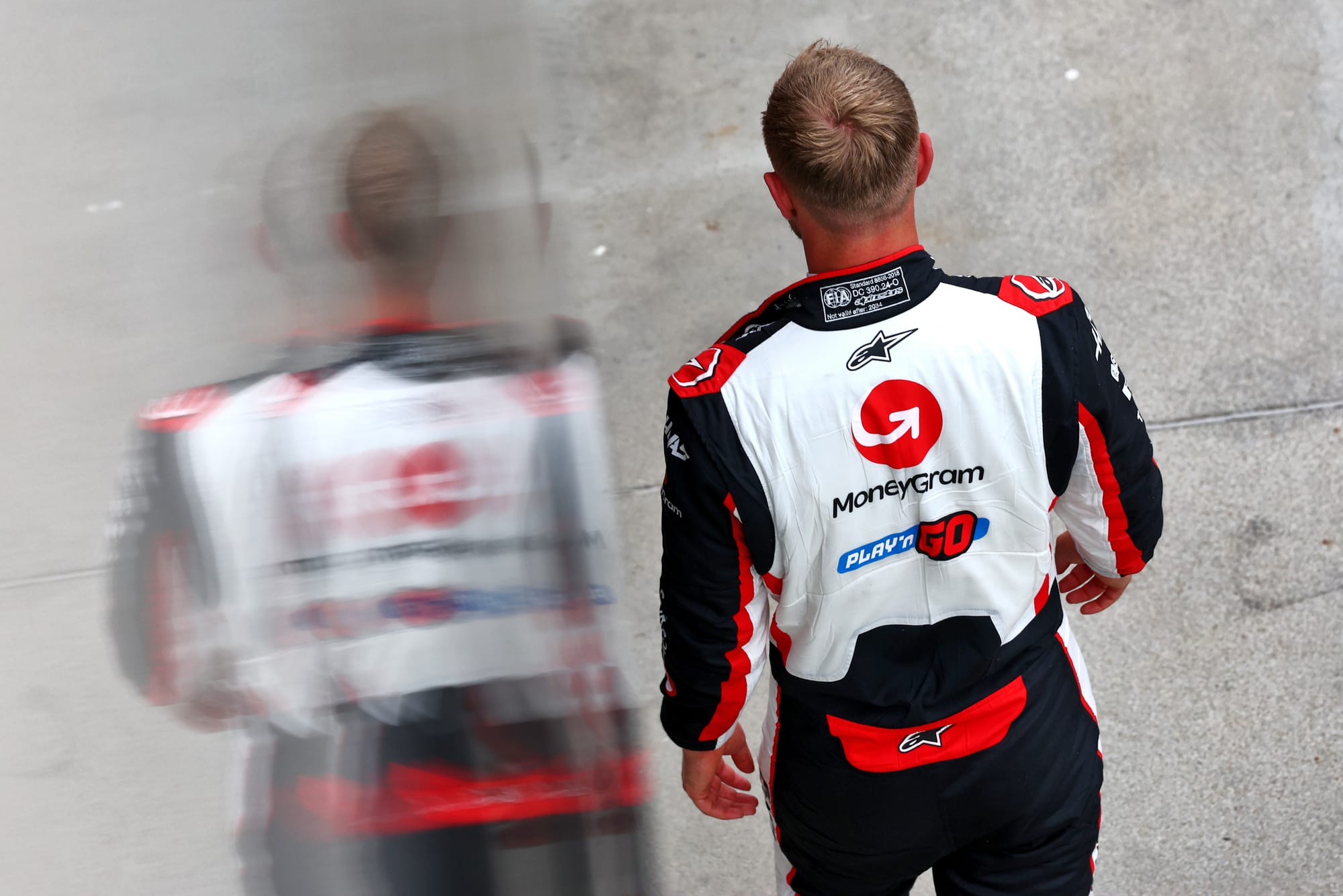

Being sidelined with illness for the recent Brazilian Grand Prix couldn’t have come at a worse time for Kevin Magnussen, and not just because it robbed him of one of his few remaining Formula 1 starts.
Instead, it interrupted the momentum he’d built over the preceding events when he was back to his best and actually building towards an impressive send-off as he exited the grid to make way for Ollie Bearman.
The 32-year-old’s career is a curious one, spread across nine campaigns punctuated by two seasons largely on the F1 sidelines. When he’s at one with the car, Magnussen is capable of tremendous speed and has produced some formidable race drives. Unfortunately, he’s only occasionally been able to do so in recent years.
Yet Magnussen was exceptional in the first two legs of the recently-completed double header, and while the wet conditions on Sunday at Interlagos that made life difficult for Haas would likely have held him back too, in the dry he would surely have flown.
WHAT'S CHANGED
Magnussen’s upturn in form coincided with Haas’s introduction of a significant aerodynamic upgrade package at Austin. Prior to that weekend, he’d only scored three times in 2024 - for 10th in Australia, eighth in Austria and then ninth-on-the-road (which became 10th after a penalty that also tipped him over the edge of the threshold for a one-race ban) at Monza.
But for the USA and Mexico events he was the faster Haas driver - including in the Austin sprint - and would have emerged from both grands prix with points but for making an inexplicable second pitstop in the first of those two races. His seventh in Mexico, at the head of the midfield, showed how strong he was.

This was a Magnussen that we’ve only occasionally seen of late. He attributes that to a significant improvement in the brakes - or, as he puts it, “some changes to the braking that really seemed to do something” and that made him “very confident with the car”. Eliminating an “inconsistency” in the brakes has transformed Magnussen’s season and the comparison to team-mate Nico Hulkenberg.
“This season when I hit the brakes, they have a bit of lag,” said Magnussen when The Race asked him to elaborate. “Then they bite a little while after hitting the brakes. So [for] that initial feeling when I hit the brakes very hard [compared to] Nico, my peak brake pressure is always way higher, I just need to feel the brakes switch on immediately and that's been really hurting my confidence on the entries.
“It upsets you for the corner when you already feel uncomfortable with the brakes. So that's been a big help.”
Magnussen thrives with confidence on turn-in. You can argue that’s true of all drivers, but he’s usually at his best with a car that has a hint of understeer to allow him to carry the speed into the corner knowing the rear end is going to stick. The brakes aren’t just a tool to slow the car, they are also a tool to set the car up dynamically for turn-in.
Now that the brakes “bite in the same way every time you hit the brakes”, Magnussen has the fine control he needs to set the car up for the corner as he wants. This is something Haas worked on improving prior to Austin, that combined with progress made during the weekend put Magnussen into a better window.
“A certain bit is on the systems side, certain bits on the temperature side,” said Haas team principal Ayao Komatsu of the gains. “Austin it was better. There were a few factors already [improved] in advance, but the changes we made on site in settings, on the system side [were an] improvement.
“He's still not happy with the stopping power, with the brakes, and that's coming from temperature and material, but at least it's consistent. He knows what he's getting.
“Before, when he hit the brakes, he didn't know when he was going to get the peak deceleration. Imagine that as a driver, it's horrible.”
WHY WASN'T HULK BOTHERED?

So why wasn’t this a problem for Hulkenberg? Well, sensitivities vary from driver to driver and while Hulkenberg confirms that he sometimes noticed the problem Magnussen battled, it simply wasn’t a relevant limitation for him.
“I’ve had it occasionally, but he has had more problems with that,” said Hulkenberg when asked by The Race about his experience of the brakes compared to Magnussen. “I’m more sensitive often on the ride of the car on bumps and things, and he’s more sensitive on the brake side. So we have different areas we feel sensitive about.
“If I look back on my career, it’s not often that I have issues with brakes or didn’t feel great with them.”
WHAT NEXT?

Should the braking characteristics be to Magnussen’s satisfaction for the final three events of the season there’s the hope not only that he can sign off on a personal high, but also steer Haas back to sixth in the constructors’ championship.
Whatever happens, it’s not going to change Magnussen’s F1 destiny given he won’t have a race seat next year. However, an ongoing role with Haas is possible. It could encompass occasional reserve driver duties, but would certainly incorporate him in the team’s new TPC (testing of previous cars) programme.
He would also be a valuable asset in assisting with the development of its new driver-in-loop simulator given, as Komatsu says, “he was very highly-rated in McLaren as the development simulator driver”.
But for now, he’s still got what will likely be the final three events of his grand prix career to look forward to. And thanks to the improvements in brake feel and consistency, he has far more hope of going out on a high.
